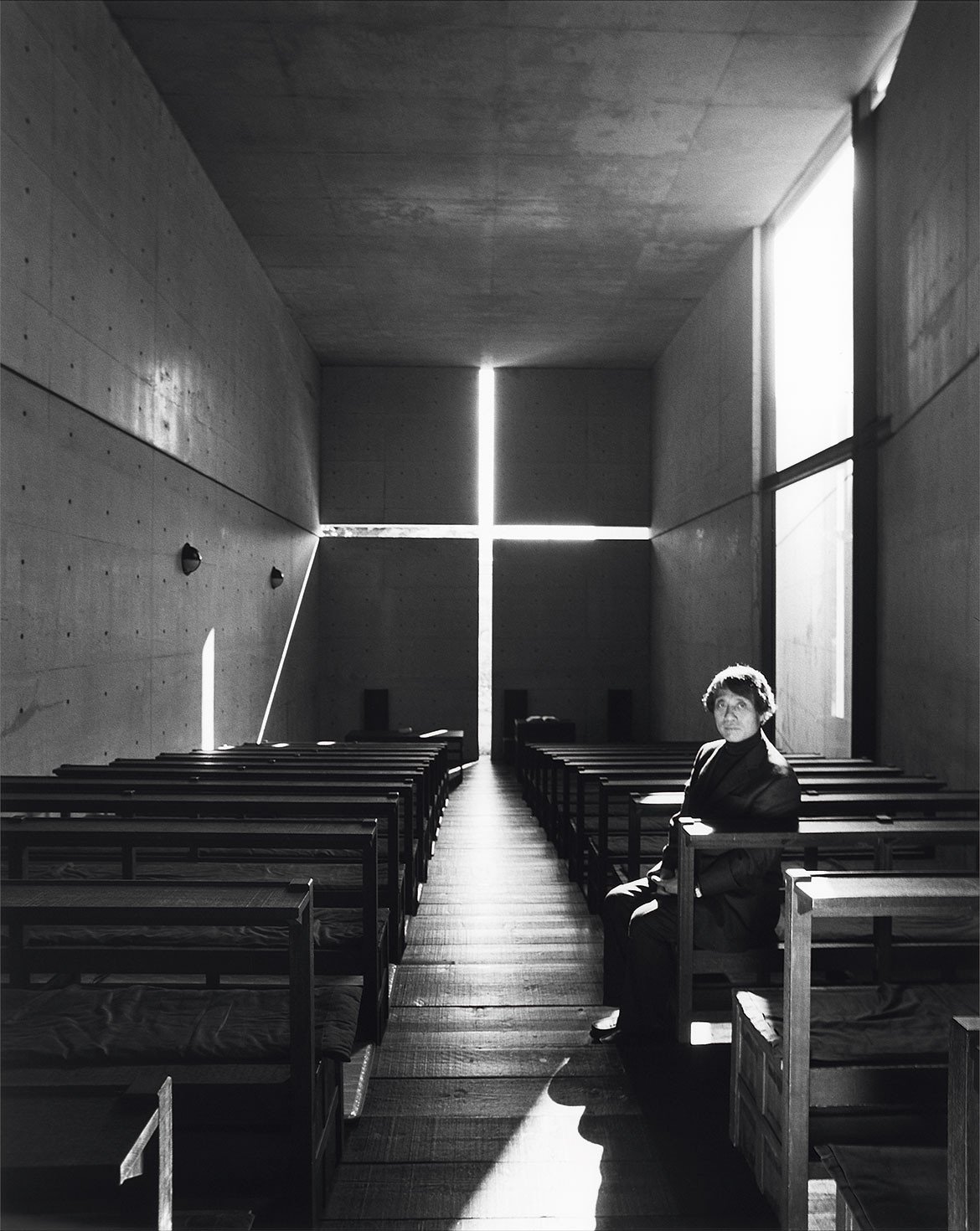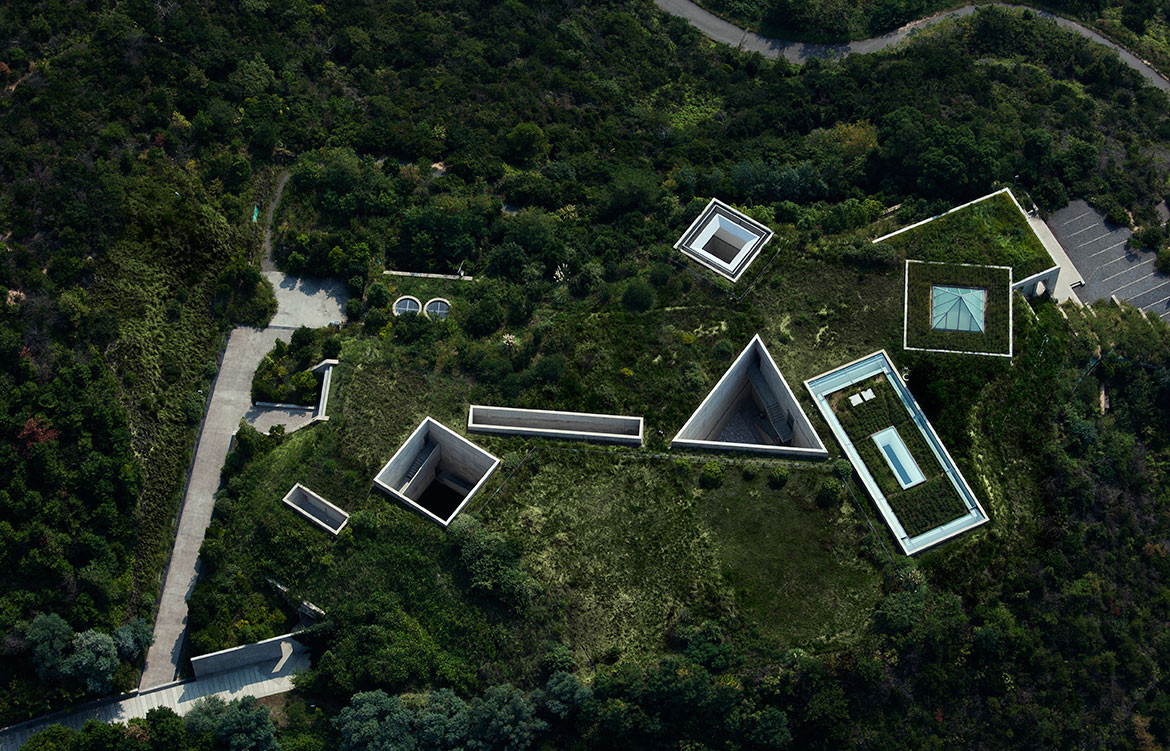Buried within a soft, undulating hill on Naoshima, a small art island in the Seto Inland Sea, sits the Chichu Art Museum by architect Tadao Ando. But quite unlike the Guggenheim museums by Frank Lloyd Wright in New York City and Frank Gehry in Bilbao, Spain, Tadao’s geometric design of Chichu is submerged. The subterranean museum made from cast concrete is positioned to channel light from voids and apertures in the hillside above.
This immersive space, which elevates the visitor’s experience to a ritualistic or spiritual rite of passage, is a hallmark of Tadao’s conceptual approach. Chichu transforms the concept of an art museum to that of a meditative crypt – inverting the iconic value of a museum into a solemn and dignified shrine.
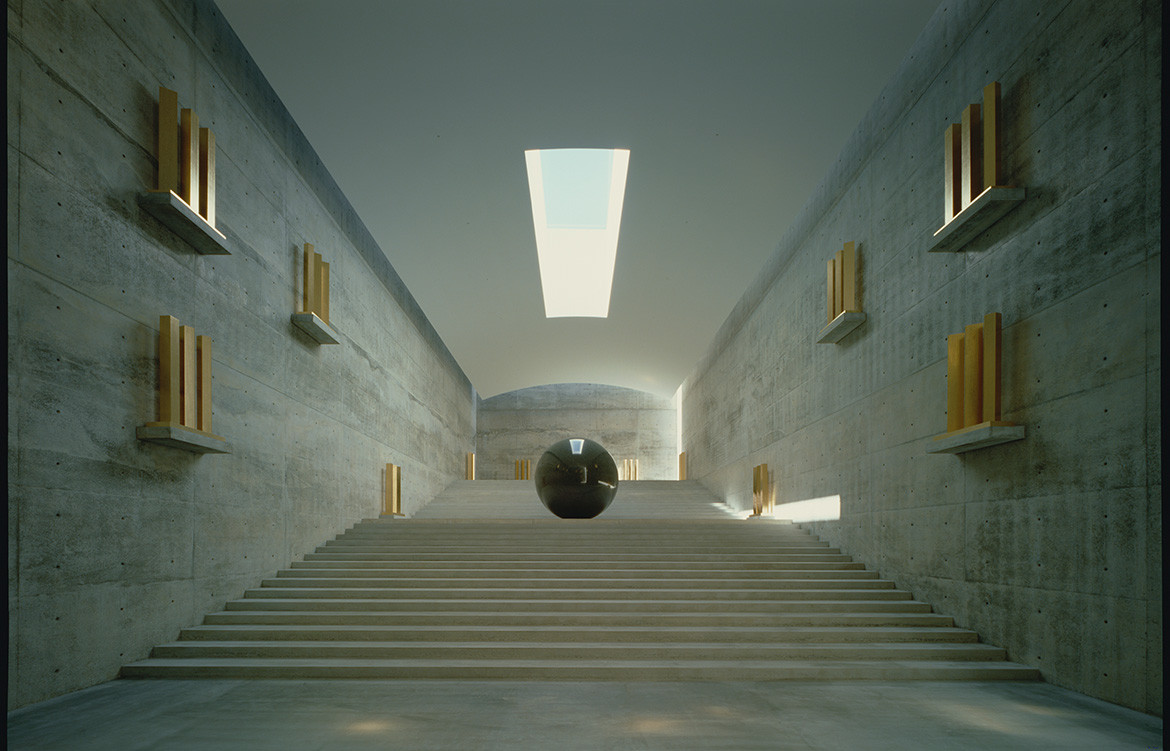
Inspired by nature and sunlight, Tadao Ando has become known globally for mutating everyday spaces into sacred experiences. Elements of light, water, wind and rain are central to shaping his dramatic yet delicate structures.
“I was born and raised in a traditional residential neighbourhood of downtown Osaka. My home was a dark place with little light and high windows,” Tadao Ando says.
“In the dim interior, I appreciated what little light we received. I would often fill my cupped hands with light coming into my room. Since then, this is the type of architecture I’ve wanted to build; an architecture which values light and reminds me of the same feelings I experienced as a child.”
His own home, Atelier, was built as a personal residence near his office in 1995: the whole home shaped around a camphor tree.
“The initial concept of the project was to construct an expansive residence around a camphor tree by spatially layering the interior and the semi-outdoor spaces,” Tadao explains.
“In the twenty years since the completion of this project, the tree in the inner garden has grown taller than the building itself. In 2015, the guest room on the top floor was converted into a meeting space. The glazing was moved and expanded into a new, cantilevered lounge space to accommodate this change.
“The original structure supports this lounge space with two diagonal rods, as if it were a floating tearoom surrounded by greenery,” he explains. While Tadao no longer lives at Atelier, preferring instead to reside in an “ordinary” apartment, he uses it for business meetings and for building scale models.
Over the years Tadao has become not only a design icon but a great advocate of social and environmental causes. A look through his portfolio reveals examples of how he’s sought to intertwine his buildings with nature.
He has also been intimately involved with planting trees in disaster zones and urban areas since the 1990s. He is currently overseeing the erection of the Sea Forest in Tokyo Bay and the planting of cherry tree orchards on Naoshima.
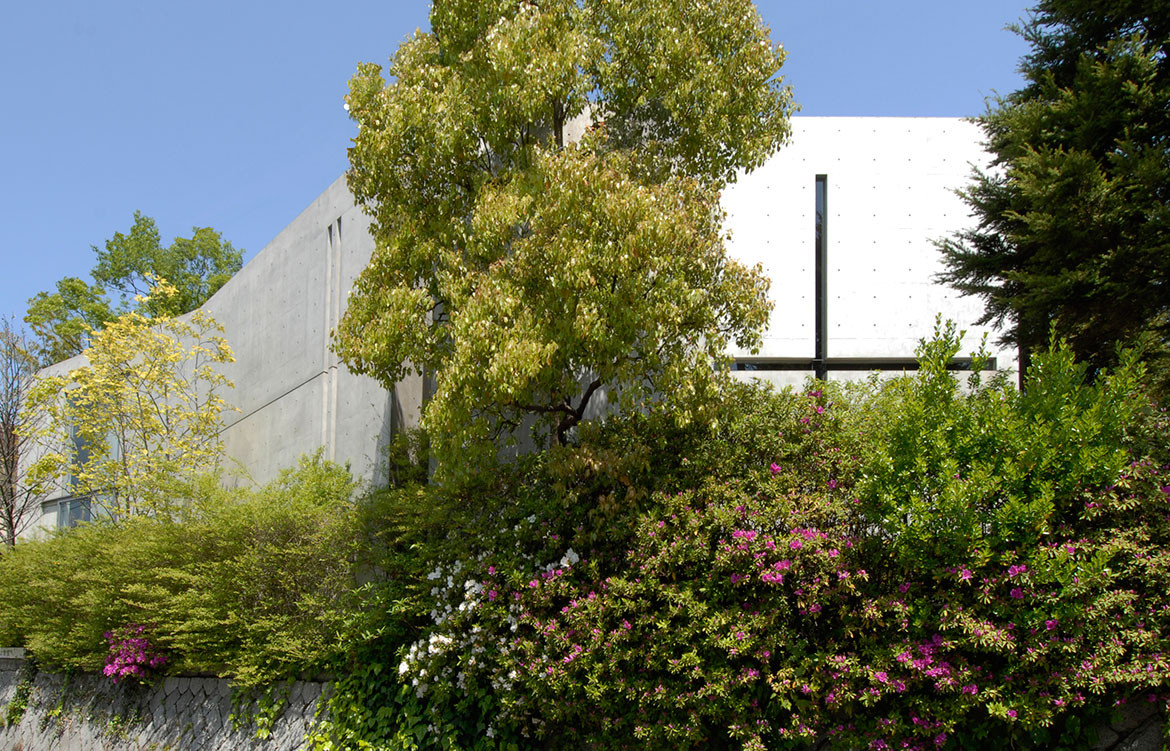
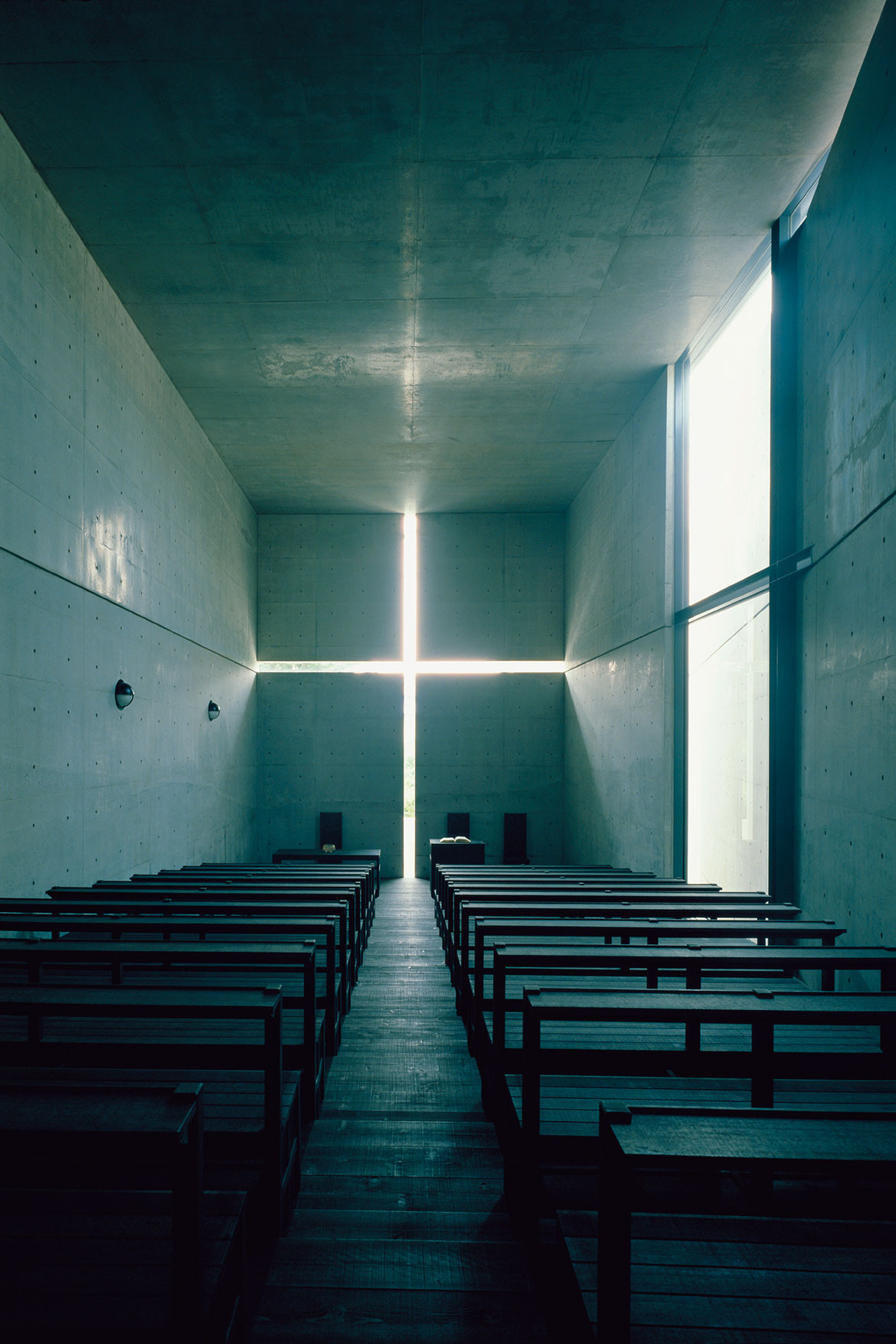
“I attribute the fact that nature is incorporated into my designs to the proximity of water and greenery to my childhood neighbourhood. My house was adjacent to the Yodogawa, the largest river in the Osaka region. These two elements, light and nature, resided near me and led me to create buildings like Church of the Light [and] Church on the Water,” Tadao says.
The motif of the shrine also reoccurs in Tadao’s work, taking from Shinto a devotional attitude toward place-experience.
“Much was discarded in the postwar Japanese houses in the name of Rationalism: contact with nature, the tangible aspects of life, the rays of the sun, the flow of the wind, and the sound of the rain. But I did not wish to discard the elements that directly speak to the body and spirit.
“I continually want to create living spaces that are integrated with nature so people can really feel that they are living.
“At times, the intrusion of nature into a building can be cold or uncomfortable, [however] it ultimately leads to robust and pure experiences of space,” Tadao says.
One of the best examples, he says, is an early progressive residence he started in 1975.
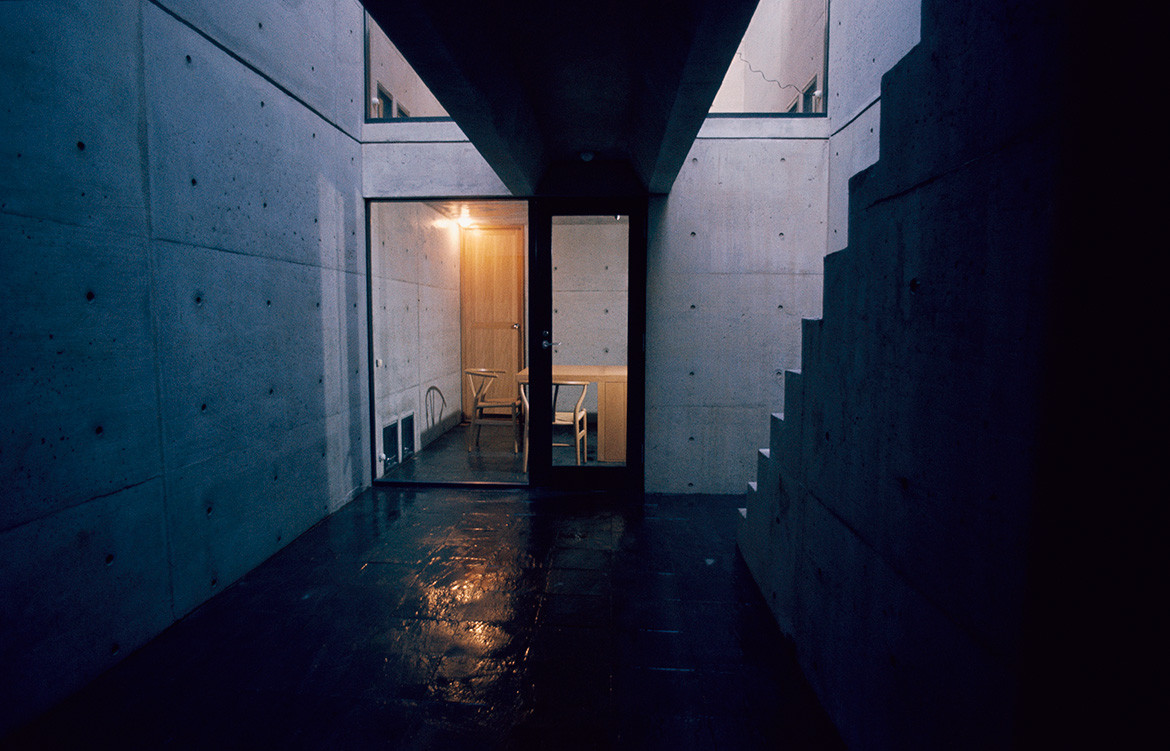
“At Row House in Sumiyoshi [also called Azuma House], a small residence in Osaka, an umbrella is necessary to access the bathroom when it is raining. The house does not contain heating or air conditioning.
“When the client came to me and asked me what he would do when it became too cold in the house, I told him to wear a sweater. When he asked me what would happen if it got even colder, I told him to wear many sweaters.
“Initially, when the house was first constructed, it was criticised for its difficulty of use, but recently it has been commended as a net-zero [carbon footprint] house. It’s funny how things change,” Tadao says softly.
Right now, he is busy undertaking an ambitious plan to transform the Bourse de commerce — the historic stock exchange in Paris — into a museum for businessman and art collector François Pinault.
“When I look back at my past work, the boldest buildings were typically realised in the presence of a brave and understanding client.
“Yukio Futagawa, a dear friend, mentor, and photographer who passed away in 2013, used to say that ‘Fifty percent of what makes great architecture is the power of the client’.
“I think that only human power can create a human architecture,” Tadao says emphatically.
Indeed in all he says and writes he emphasises the critical importance of integrating nature into architecture and warns against an over-reliance on computers.
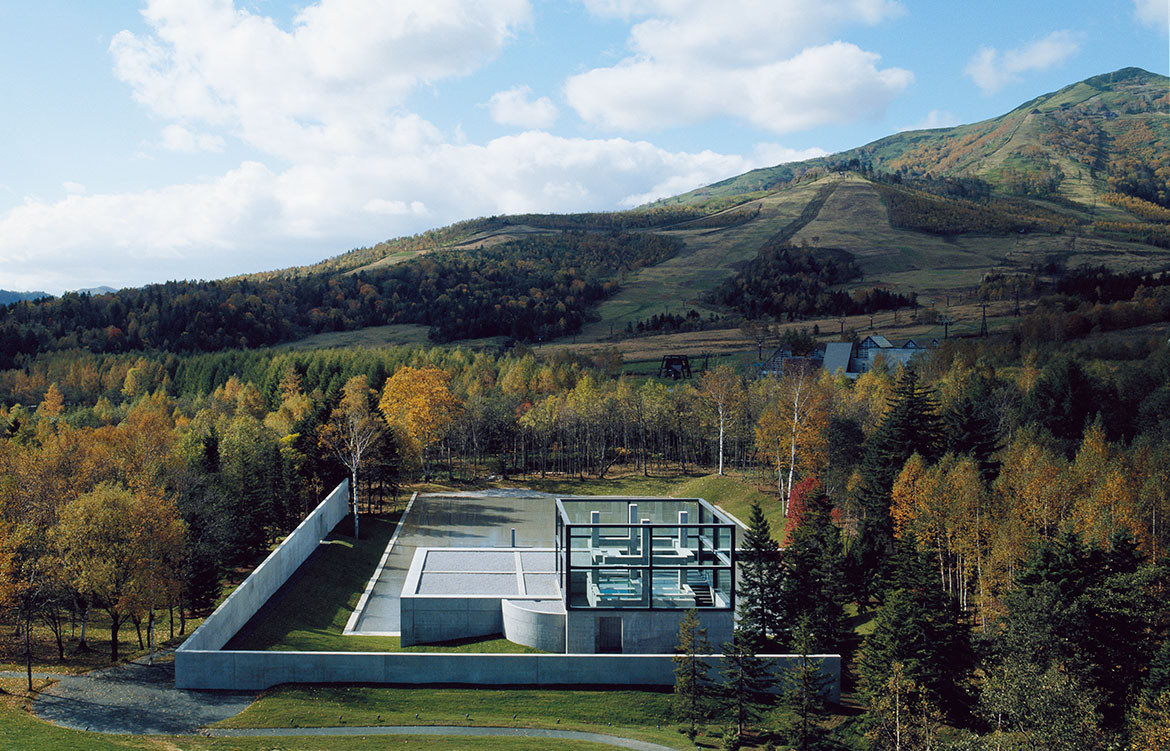
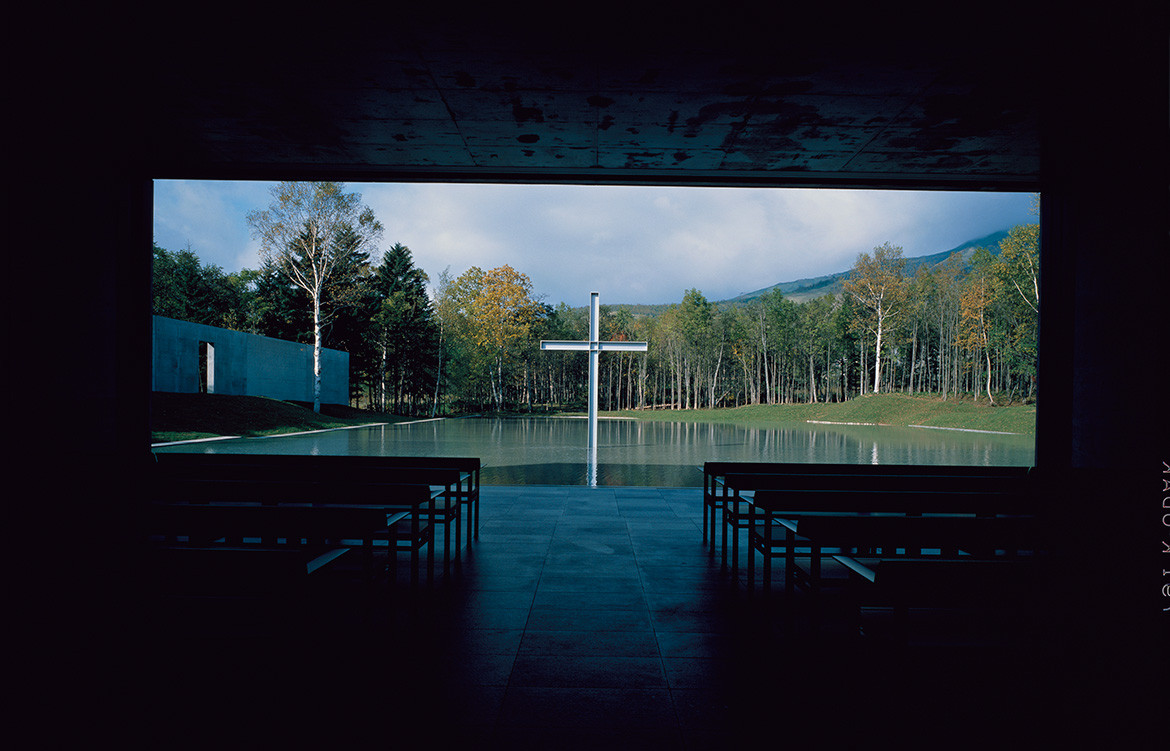
“Over the years I have worked with a range of clients with distinct personalities, including Issey Miyake, Soichiro Fukutake of the Benesse Corporation, Mr. and Ms. Pulitzer of the Pulitzer Arts Foundation, Giorgio Armani, Luciano Benetton, Tom Ford, Karl Lagerfeld, François Pinault etc, many of these clients have become my close friends.
“Relationships between architects and clients play a considerable role in forging architectural culture, but in modern times, these relationships have begun to vanish,” Tadao says.
Since setting up shop in 1969, Tadao Ando has designed more than 200 buildings. His iconic status now rivals that of Le Corbusier, the man who sparked his initial interest in architecture when he was in his early 20s. Tadao now splits his time between teaching, volunteering and special projects.
“It is essential to incorporate nature into architecture, whether by materiality or element. The feeling of warmth is important in a residence, but even moreso is the integration of the structure in nature.”
When working at his own Studio Oyodo, Tadao explains that he structured the office “to be one connected space”.
“It is crucial to me that sound and information spread throughout the building,” he says. When it comes to hiring architects, he takes a similarly direct approach.
“When I make decisions to hire new young staff, I tend to look at their faces. I have always thought of a person’s face as a doorway to their feelings and thoughts. Specifically, if their eyes are bright and gleaming, I will know that they will have a firm resolve and be passionate about their work.”
Tadao Ando Architect & Associates
tadao-ando.com
